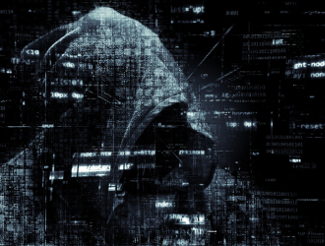In a world that is growing increasingly digital, the importance of keeping online accounts secure is more important than ever. But while much of the focus on online security focuses on accounts with email providers, online merchants, etc., less focus is placed on security at even more important accounts: savings and investment accounts.
Like bank robbers, hackers are attracted to where the money is. And with many more people today accessing their bank accounts and retirement accounts online, the incentive for hackers to target those accounts is growing. The last thing anyone wants to do is log into a retirement account and find their retirement savings siphoned away by thieves.
That will be the case for a growing number of people in the future, however, which is why it’s important to take steps to keep your retirement accounts safe. These six easy steps can help make sure that your retirement accounts remain firmly under your control.
1. Keep Your Email Accounts Secure
So much of what we do today revolves around our email accounts. Email is often our primary means of communication, and our email addresses are often used as usernames for online accounts. The average American uses a single email account to register for everything from message boards to online retailers to financial accounts. And that makes them a gold mine for hackers looking to steal from you.
Once hackers access your email account, they will start searching for any information about your financial accounts: bank accounts, brokerage accounts, retirement accounts, etc. More sophisticated hackers may attempt to send emails in your name, mimicking your style of writing, asking individuals at the financial institutions you deal with to transfer money. They may delete any record of those emails before you have a chance to see them. And if your financial institution doesn’t do its due diligence and speak to you personally, the hackers may be successful in transferring your money to their own accounts.
That’s why it’s vitally important to keep email accounts secure. Use strong passwords that you don’t use for other websites, consider using two-factor authentication, and don’t allow anyone else to access your email accounts. You may also want to think about changing your passwords every 6-12 months, to make sure that hackers won’t be able to brute force their way into your account.
You also need to remember not to click on links in emails that look suspicious, even if they’re supposedly from people you know. Nor do you want to open attachments unless you’re expecting them. If a friend or family member has an email account compromised, hackers will use their account to send phishing emails to everyone in their contact list, hoping to ensnare more unsuspecting people.
2. Consider Using Two-Factor Authentication
Two-factor authentication can be helpful in keeping email accounts secure, but it can also be helpful for keeping retirement accounts secure. Some retirement accounts, such as the federal Thrift Savings Plan (TSP), now require two-factor authentication. Other financial institutions may offer it as an option. While it may be inconvenient to have to use two-factor authentication on a regular basis, it sure beats having your savings siphoned off by criminals.
3. Don’t Give Out Sensitive Data
With identity theft becoming a major problem, and social engineering hacking becoming a more and more common way for hackers and thieves to access accounts, you need to keep your sensitive information secure. That means not disclosing your Social Security number, date of birth, mother’s maiden name, and any other sensitive data to anyone who doesn’t have an absolute need to know.
Too many people publish too much about their lives on social media. That becomes a prime place for hackers to gather information about people. The more information they can glean about you, the easier it becomes for them to steal your identity or impersonate you with service providers. Before you know it, they’re able to change addresses to which bills are sent, access financial accounts, and drain you of your life savings.
4. Check Your Accounts Periodically
Retirement accounts are intended for long-term growth, so it’s only natural for people not to check them all that frequently. That gives thieves the opportunity to make off with your investments, knowing that it may be months or years before their theft is discovered.
You don’t have to keep on top of your retirement accounts every day, but monthly or quarterly check-ins can help ensure that you still have all the money that you’re supposed to have. If you have the ability to send notifications anytime your account is logged into, that can help alert you in case someone accesses your account who isn’t supposed to. And check to see what kind of protection against theft your retirement account provider offers.
5. Update Your Software and Hardware
Many of us want to use our electronics as long as we can. But that can leave them outdated in terms of the software they support, rendering them vulnerable to exploitation.
Computers are relatively easy to update, and you should always make sure that you install the latest security updates. Microsoft generally offers security updates every month, Apple every couple of months, and Linux distributions on an ongoing basis. Make sure that your email clients and internet browsers are updated as soon as security updates are available.
Because phones and tablets are generally provided by our phone companies, we’re often at their mercy when it comes to software updates. Phones that are even two years old often aren’t scheduled to receive the latest software updates for Android. And phones that are four or five years old may be so outdated that they can’t receive updates for the apps that you may use to access email or financial accounts on your phone. That’s all the more reason to upgrade your phone on a regular basis, or make sure that you don’t do any sensitive business on your smartphone.
You also want to pay attention to your networking equipment. Changing the default password on your home router can be very helpful, as can making sure that your WiFi passwords are strong. Any visitors to your home should be allowed to access a guest network, not your primary network. And never, ever do anything sensitive over public WiFi networks.
6. Diversify Your Investment Portfolio
Every investor needs a diversified investment portfolio, and that means investing in different asset types, across asset classes, and in different geographic regions. Sticking just to stocks and bonds and not investing in gold, commodities, real estate, or other alternative assets will leave your portfolio at risk in the event of a Wall Street downturn. But the same diversification should apply to where you have your retirement accounts and savings accounts.
Keeping all your money at one bank leaves you at risk if that bank goes under. So think about having money at two different banks, or at one bank and one credit union.
With your retirement accounts, do you have all your money in your employer’s 401(k) plan? Or do you have all your funds with a single brokerage? If so, you’ll want to consider spreading your money out. Think about rolling over funds from an IRA or 401(k) into a gold IRA, or opening accounts with multiple brokerages. That way, even if one of your accounts get compromised, the majority of your retirement savings remains secure.
The last thing anyone wants is to spend a lifetime saving and investing only to be plundered by thieves. Hopefully these tips will get you thinking about the security of your retirement accounts and taking concrete steps to keep them safe.
This article was originally posted on Goldco.




